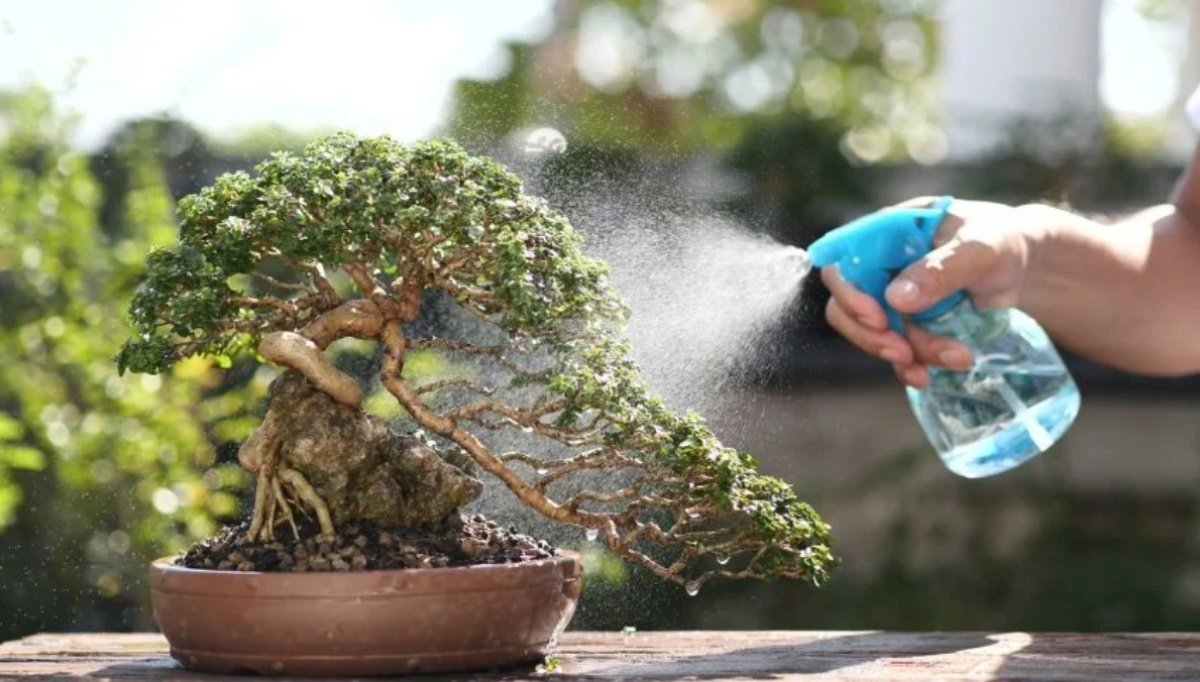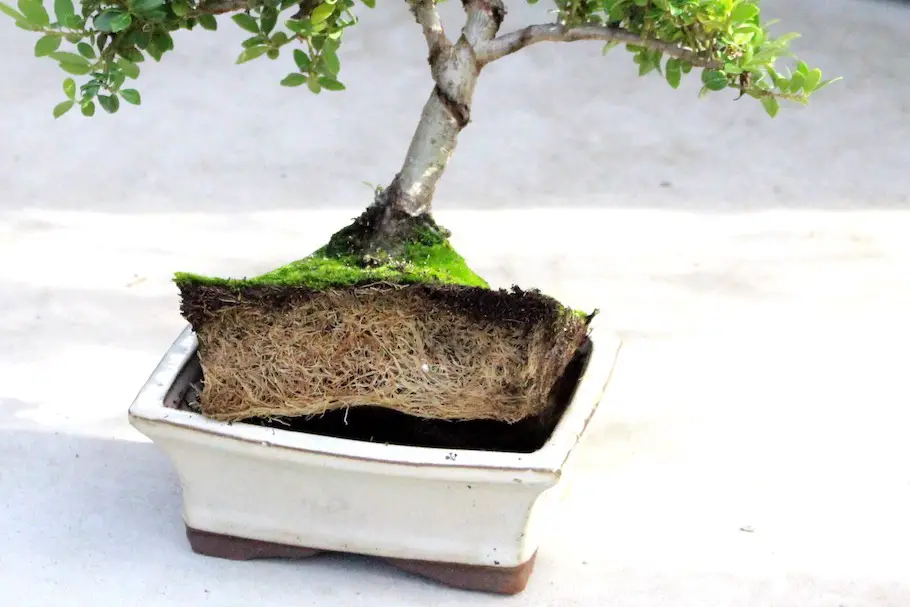Watering bonsai trees correctly is crucial for their health and growth. The best way to water bonsai involves understanding their unique needs and environment.
Caring for a bonsai tree requires more than just a green thumb. These miniature trees need specific care to thrive, and watering is one of the most important aspects. Bonsai trees have delicate roots and small pots, making their watering needs unique.
Overwatering can lead to root rot, while underwatering can cause the tree to dry out and die. In this post, we’ll explore the best ways to water bonsai trees, ensuring they stay healthy and beautiful. Whether you’re a beginner or an experienced bonsai enthusiast, understanding these techniques can make a big difference in your bonsai care routine.
Introduction To Bonsai Watering
Proper watering keeps your Bonsai tree healthy. Water helps the tree grow. It moves nutrients through the roots. Too much or too little water can harm the tree. This can cause the leaves to dry up or fall off. Always check the soil moisture. If the soil is dry, your tree needs water. A well-watered tree looks fresh and green.
Overwatering is a common mistake. It can lead to root rot. Another mistake is underwatering. This makes the tree weak. Some people water on a fixed schedule. This is not good. Always check the soil first. Using hard water is another error. Hard water has too many minerals. This can harm the tree. Use rainwater or distilled water if possible.
Understanding Bonsai Soil
Different bonsai trees need different soil types. Organic soil includes bark and compost. Inorganic soil has sand and perlite. Organic soil holds water better. Inorganic soil drains water faster. Choose soil based on your tree’s needs.
Good drainage is key for bonsai health. Poor drainage can cause root rot. Use soil with gravel or sand. This helps water flow out. Check soil often. It should be moist, not wet. Adjust watering based on soil type.
Watering Techniques
Proper watering is crucial for bonsai care. Use a gentle spray, ensuring the soil is evenly moist. Avoid overwatering to prevent root rot.
Top Watering
Bonsai trees need special care. Top watering is a good method. Use a small watering can. Pour water gently over the soil. Do not rush. Make sure the water reaches the roots. Wait until water drains from the bottom. Repeat if necessary. This ensures the soil is moist. Avoid overwatering. Check the soil often.
Bottom Watering
Another method is bottom watering. Place the bonsai pot in a tray. Fill the tray with water. Let the tree soak for 10 minutes. Water will move up through the soil. This helps reach deep roots. Remove the pot from the tray. Let it drain. Bottom watering prevents root rot. It keeps the tree healthy. Check the soil to avoid dryness.
Frequency Of Watering
Bonsai trees need daily checks for their water needs. The soil should feel moist, but not too wet. If the soil is dry, it is time to water. Check the soil with your finger. Push it about one inch into the soil. If it feels dry, water your bonsai. Overwatering can hurt the tree. It is important to find a balance.
Watering needs change with seasons. In summer, bonsai trees need more water. The heat dries the soil faster. In winter, they need less water. The soil stays moist longer. Check the soil daily, but adjust based on the season. Always ensure the soil is moist but not soggy.
Signs Of Overwatering
Yellowing leaves, wilting stems, and a musty smell are clear signs of overwatering your bonsai. Be sure to check soil moisture before watering.
Symptoms To Watch
Overwatered bonsai trees may have yellowing leaves. Leaves may also fall off. Soil might stay wet for too long. This can lead to root rot. You might see mold on the soil surface. The tree may look weak or sick. Leaves can become soft and wilted. Watch for bad smells from the soil. These are all signs of too much water.
Preventing Overwatering
Always check the soil before watering. Use your finger to feel the soil. The top layer should be dry before you water. Water the bonsai slowly. Let the water soak in. Make sure the pot has good drainage. Excess water should flow out easily. Do not let the pot sit in water. Use a pot with holes at the bottom. Place a tray under the pot to catch water. Water the bonsai in the morning. This helps the soil dry during the day.

Credit: yugenbonsai.com
Signs Of Underwatering
Leaves may turn yellow or brown. They might also curl up. The soil could feel dry. The tree may look droopy or weak. Roots can become fragile. The tree might lose leaves.
Check the soil often. Water the bonsai when the topsoil is dry. Don’t let the soil dry out completely. Use a watering can with a fine nozzle. This ensures even watering. Place the bonsai in a shallow tray with water. This can help keep humidity high. Ensure the pot has good drainage.
Using Watering Tools
Watering tools help keep bonsai trees healthy. Use a gentle watering can or hose to avoid damaging the soil. Check soil moisture regularly to ensure proper hydration.
Watering Cans
Watering cans are very helpful. They have a long spout. This helps in reaching the soil. Make sure the can has a fine rose. This spreads water gently. It is good for the bonsai. Too much water pressure can damage it.
Misting Bottles
Misting bottles are also useful. They keep the leaves moist. This is very important for bonsai. Mist the leaves in the morning. This helps the plant stay healthy. Do not mist too much. It can cause mold.

Credit: www.bonsaiempire.com
Expert Tips For Healthy Growth
Bonsai trees need the right humidity to grow. Too much or too little can harm them. Use a humidity tray under the pot. This helps keep the air around the tree moist. You can also mist your bonsai with water. Do this a few times a day. Check the soil often. It should not be too wet or too dry.
Water quality matters for bonsai. Tap water can have chemicals. Rainwater is best if you can collect it. Distilled water is another good choice. Avoid using hard water. It can leave harmful minerals in the soil. Always water your bonsai deeply. Make sure the water drains well.

Credit: thebonsaisupply.com
Frequently Asked Questions
How Often Should I Water My Bonsai?
Water your bonsai when the topsoil is dry. Frequency varies by climate and season.
What Is The Best Water For Bonsai?
Use rainwater or distilled water for best results. Avoid hard tap water.
Can I Overwater My Bonsai?
Yes, overwatering can cause root rot. Ensure proper drainage and let soil dry slightly.
Should I Mist My Bonsai?
Misting helps maintain humidity. It’s beneficial, especially for indoor bonsai.
Conclusion
Caring for bonsai requires proper watering techniques. Consistent and mindful watering keeps bonsai healthy. Check soil moisture daily. Water thoroughly until it drains from the bottom. Use rainwater or distilled water for best results. Avoid overwatering to prevent root rot.
Adjust watering frequency with season changes. Healthy bonsai plants reward patience and care.

My mission is to help you bring the beauty of nature indoors with expert advice, detailed plant care guides, and creative design ideas.





Leave a Reply